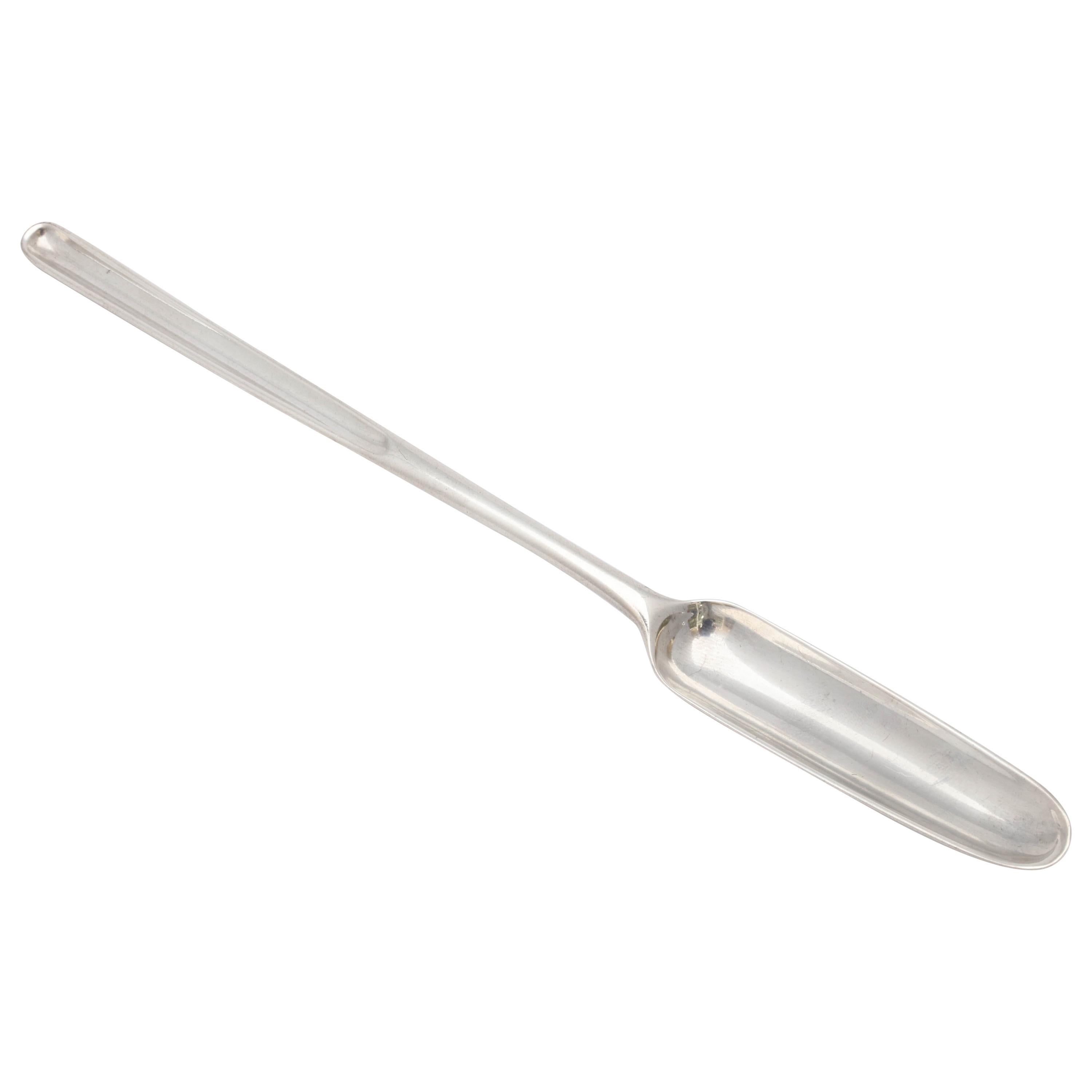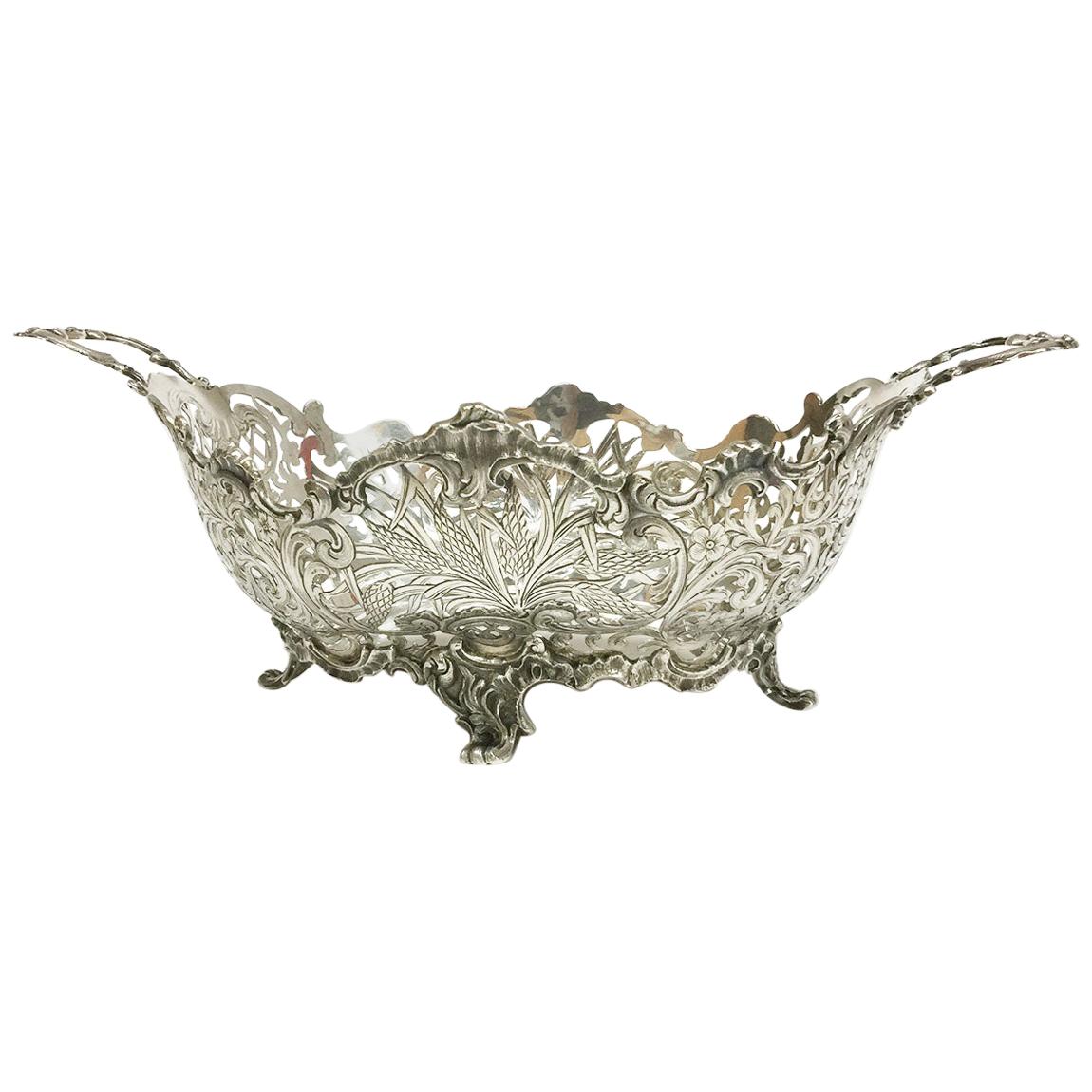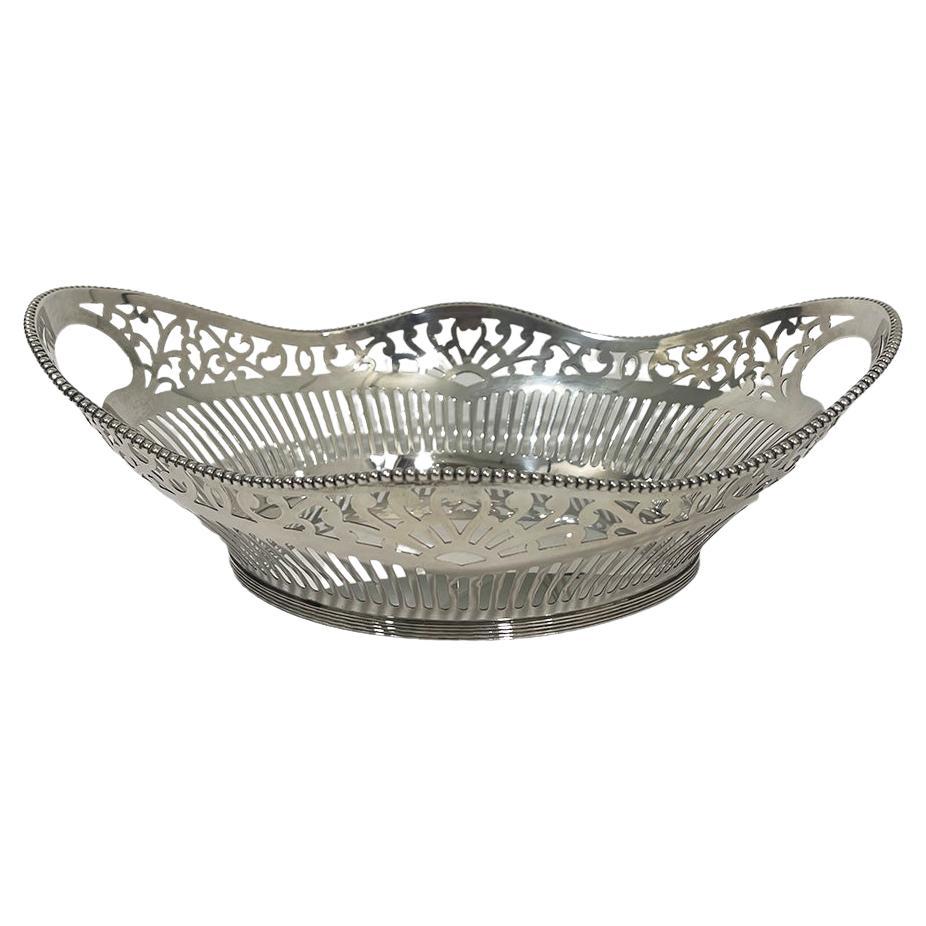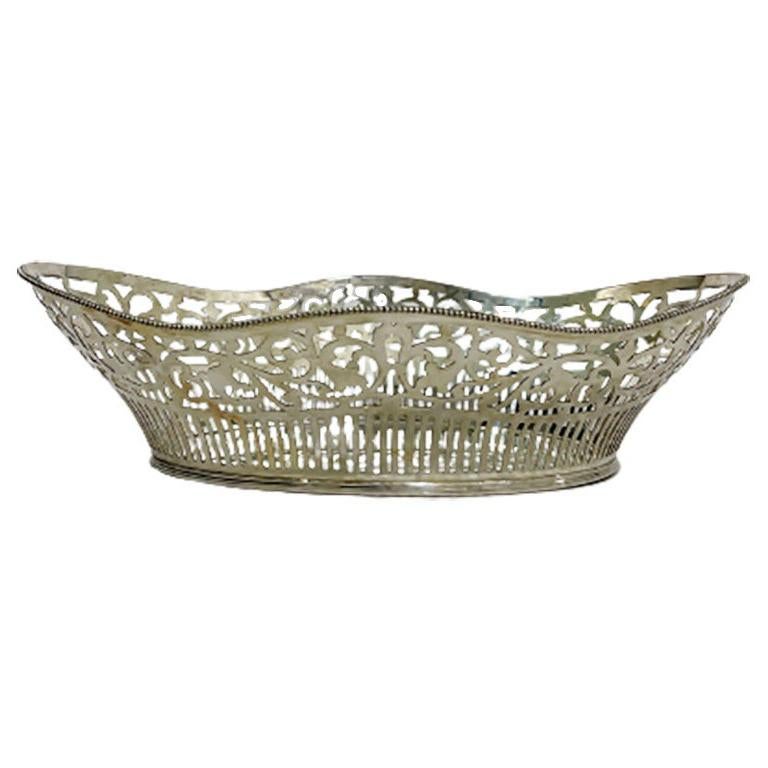Items Similar to Rare Dutch Caribbean Silver Water-Scoop Curaçao, circa 1873
Want more images or videos?
Request additional images or videos from the seller
1 of 2
Rare Dutch Caribbean Silver Water-Scoop Curaçao, circa 1873
About the Item
A rare Dutch Caribbean silver water-scoop
Curaçao, circa 1873, indistinctly marked, engraved with initials G R P
Measures: L 35 cm, weight 221 grams
The form of the water scoop is derived from a half coconut on a wooden handle. Silver water scoops, in different forms, are quite common in Mid- and South America, but unknown in Asia. Silver was supposed to disinfect water, but a silver water scoop undoubtedly also was a sign of the prosperity of its owner.
G R P probably relates to Gerard Rudolf Palm (Curaçao 1845-The Hague 1880), son of Frederik Palm and Maria Hendrika Johanna Elisabeth Latté. Hermanus Palm born in Karlskrona, Sweden, was the first of the Palm family to arrive in Curaçao where he died before 1777. Gerard Rudolf was the
fifth generation of the Palm family in Curaçao and was a slave owner in
1862 when slavery was abolished in the Dutch Caribbean because he was compensated 400 guilders. Gerard Rudolf was registered as a law student at the University of Leiden in 1862, and as a lawyer in Curaçao in 1873. In the same year, he was appointed cantonal judge and on April 1st member of the Court of Justice. Gerard Rudolf married Pauline Reina Eliza Boer (Curaçao 1850) daughter of Henry Boer and Arendina Jacoba Alberdinck in 1870. Together they had a son who died at the age of one, and a daughter who
had no children. Gerard Rudolf had four half-brothers and two half-sisters whom all had several children, and today there are many members of the Palm family. Henry Boer, the father of Gerard’s wife, probably was
the same as lieutenant H. Boer who made the architectural
drawings for the new church of San Willibrordo in
Curaçao in 1849. On August 15th, 1879,
because of health problems, Gerard
Rudolf sailed to the
Netherlands where he died, 34 years of age.
Curaçao was a small Community with few silversmiths working there during the 19th century. Few pieces were marked, and much of what they made was exported to mainland South America. Therefore, very little silver can be ascribed with any certainty to Curaçao silversmiths. One other unmarked silver water scoop, from the collection of Mr Van de Walle, is illustrated
in Uit Verre Streken, June 2014, nr. 6. In the 1940s Van de Walle collected and published on antique Curaçao furniture and silver while working there as a journalist. He was the first Dutchman to collect the applied arts from the Dutch Antilles (see J. Veenendaal, Meubelen en zilver van
Curaçao, in Antiek, tijdschrift voor oude kunst en
kunstnijverheid, November 1994, pp. 24-31).
- Dimensions:Height: 3.94 in (10 cm)Width: 13.78 in (35 cm)Depth: 3.15 in (8 cm)
- Style:Dutch Colonial (Of the Period)
- Materials and Techniques:
- Place of Origin:Caribbean
- Period:
- Date of Manufacture:circa 1873
- Condition:Wear consistent with age and use.
- Seller Location:Amsterdam, NL
- Reference Number:1stDibs: LU5458222031612
About the Seller
5.0
Vetted Seller
These experienced sellers undergo a comprehensive evaluation by our team of in-house experts.
Established in 1985
1stDibs seller since 2020
19 sales on 1stDibs
Typical response time: 3 hours
- ShippingRetrieving quote...Ships From: Amsterdam, Netherlands
- Return PolicyA return for this item may be initiated within 7 days of delivery.
More From This SellerView All
- Splendid and Heavy Late 17th Century Dutch-Colonial Silver Filigree SalverLocated in Amsterdam, NLA splendid and heavy Dutch-colonial silver filigree salver Indonesia, Batavia (Jakarta) or possibly Padang, West Sumatra, 2nd half 17th century Diam. 22.9 cm Weight 551 grams This filigree-work was probably done by Chinese masters...Category
Antique 17th Century Indonesian Dutch Colonial Metalwork
MaterialsSilver
- Dutch Colonial Silver Dish with the Von Pfeffel Coat-of-arms, 17th CenturyLocated in Amsterdam, NLAn unusual Indonesian lobbed silver dish Jakarta (Batavia) or Coromandel coast, third quarter 17th century, apparently unmarked The eight lobbed dish exuberantly decorated with floral motifs, with the middle section replaced, consisting of indistinctly marked German silver from the early 19th century, bearing the coat-of-arms of the Von Pfeffel family. Diam. 30.5 cm Weight 461 grams Note: Lobbed silver dishes with exuberant floral decorations were characteristic of the decorative arts in the Netherlands in the first half of the 17th century. This style of floral decoration was adopted by silversmiths as well as by furniture makers working on the Coromandel Coast and in Batavia, often by workers who had fled the Coromandel Coast because of war and famine. In Batavia this style was known as “Custwerck” (work from the Bengal coast). These lobbed dishes are seldom marked. Only after 1667 the use of the town mark became obligatory in Batavia but only for silver made in Batavia not for silver imported in Batavia from other VOC settlements. The engraved coat of arms in the centre is a replacement of the original centre. The coat of arms can be identified as those of Christian Hubert von Pfeffel (1765- 1834). As a diplomat, statesman, ambassador of Bavaria in London and Saxony and councillor to the King of Bavaria, he was made “Freiherr” in 1828 and since then used this coat of arms. His son Karl Maximilian Friederich Hubert Freiherr von Pfeffel (1811-1890) in 1836 married Karoline Adelheid Pauline von Rottenburg (1805-1872), the natural daughter of Prins Paul von Württemberg (1785-1852) and his mistress Margrethe Porth. Paul was the jounger brother of the King Wilhelm I of Württemberg (1781-1864). The heraldic motto of the von Pfeffels Vur Schande habe den Huot means as much as “Beware of Shame”. Christian Hubert Theodoor Marie Karl von Pfeffel Karl Maximilian’s grandson was the last male in the von Pfeffel line. His daughter, Marie Louise (Paris in 1882 - Cornwall 1944), born and grown-up in France, changed her name in de Pfeffel. She was the great grandmother of Boris Alexander de Pfeffel Johnson, the present British Secretary of State. None of the members of the von Pfeffel family had any direct links with the Dutch East Indies but indirectly by way of the Royal House of Württemberg they did. Sophia Frederika Mathilda von Württemberg (1818-1877), daughter of Wilhelm I King of Württemberg, in 1839 married Willem III...Category
Antique Late 17th Century Indonesian Dutch Colonial Sterling Silver
MaterialsSilver
- Rare 17th Century Silver Reliquary Arm MonstranceLocated in Amsterdam, NLA rare silver reliquary arm with relic bone, with the coat-of-arms of Cosme Roger (1671-1710), bishop of Lombez, France, with original bone relic Poss...Category
Antique Late 17th Century Italian Renaissance Religious Items
MaterialsSterling Silver
- Fine 17th Century Dutch Colonial Armorial Tortoiseshell & Silver Box, Dated 1691Located in Amsterdam, NLA dutch tortoiseshell box with two engraved silver plaques Amsterdam, 1691, with maker's mark of Steven des Rousseaux (1654-1733) H. 5 cm Diam. 12.5 cm Note: Steven des ...Category
Antique 17th Century Dutch Sterling Silver
MaterialsSterling Silver
- Fine Dutch Colonial Indonesian Casket with Silver Mounts, circa 1706Located in Amsterdam, NLA fine Indonesian Ambonya burl, ebony and teak casket with silver mounts Jakarta (Batavia), circa 1706 (year letter W (1705-1710), marked DV, probably Dirck Vooght The outer ri...Category
Antique Early 18th Century Indonesian Dutch Colonial Decorative Boxes
MaterialsSterling Silver
- Fabulous Indonesian Yogya-Silver PlateLocated in Amsterdam, NLAn Indonesian Yogya-silver plate Yogyakarta or Kotagede, 1935-1940, marked, (alloy) 800 and maker’s mark PH (Prawirohardjo, act. from 1935) Diam. 27.2 cm Weight 454 grams Th...Category
Early 20th Century Indonesian Art Deco Sterling Silver
MaterialsSilver
You May Also Like
- Georgian, Sterling Silver Marrow ScoopLocated in New York, NYGeorgian, sterling silver, marrow scoop, London, 1795, Thomas Northcote - maker. Measures: 9" long x 1" across widest point excellent condition.Category
Antique 18th Century and Earlier British Georgian Sterling Silver
MaterialsSterling Silver
- Sterling Silver Georgian 'George III' Marrow ScoopBy William Sumner I & Richard CrossleyLocated in New York, NYSterling silver, Georgian 'George III', marrow scoop, London, 1781, William Sumner I and Richard Crossley makers. Measures 9 inches long x 1 3/4 inches wi...Category
Antique 1780s English George III Sterling Silver
MaterialsSterling Silver
- Dutch Silver Bread Basket, 1896Located in Delft, NLDutch silver bread basket An oval Dutch silver bread basket with handles and richly engraved and openwork floral decor and grain motif The silvers...Category
Antique 19th Century Dutch Sterling Silver
MaterialsSilver
- William IV Double-Sided Sterling Silver Marrow ScoopBy Mary ChawnerLocated in New York, NYWilliam IV, sterling silver, double-sided marrow scoop, London, 1836, Mary Chawner - maker. Dimensions: 9 1/4 inches long x 1 inch wide at widest point x ...Category
Antique 1830s English William IV Sterling Silver
MaterialsSterling Silver
- Dutch Silver Bread Basket, Schoonhoven 1966Located in Delft, NLDutch Silver Bread Basket, Schoonhoven, 1966 An oval round Dutch silver bread basket with openwork decor and pearl rim. The basket has a scalloped shape with openwork handles The ba...Category
20th Century Dutch Sterling Silver
MaterialsSilver
- Dutch Silver Bread Basket, Aubert & ZnLocated in Delft, NLDutch silver bread basket, Aubert & Zn An oval Dutch silver bread basket with openwork decor. The silversmith is Aubert & Zn. D.J. Aubert, Den...Category
Mid-20th Century Dutch Sterling Silver
MaterialsSilver
Recently Viewed
View AllMore Ways To Browse
Dutch 1880
Silver Marked G
Holland And Son
Holland And Sons
R Holland
Antique Colonial Kitchen
Dutch 1940s
Childrens Kitchen
Antique Scoop
Antique Scoops
Colonial America Silver
Antique Colonial Signs
Sail Silver
Colonial American Silver
Antique Colonial Architecture
Sterling Watering Can
Colonial A Sterling
Sterling Silver Watering Can





